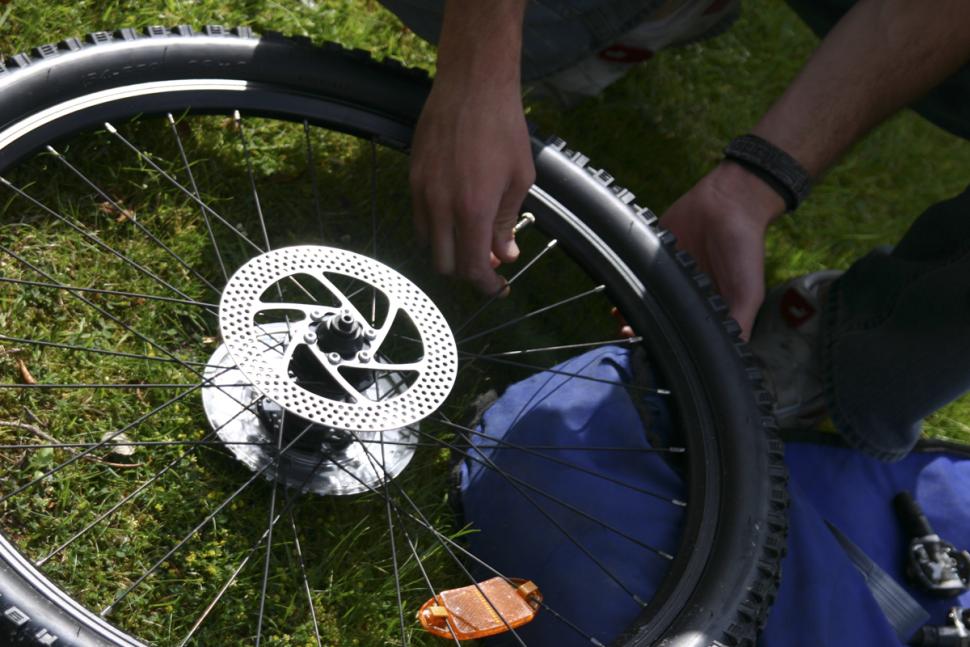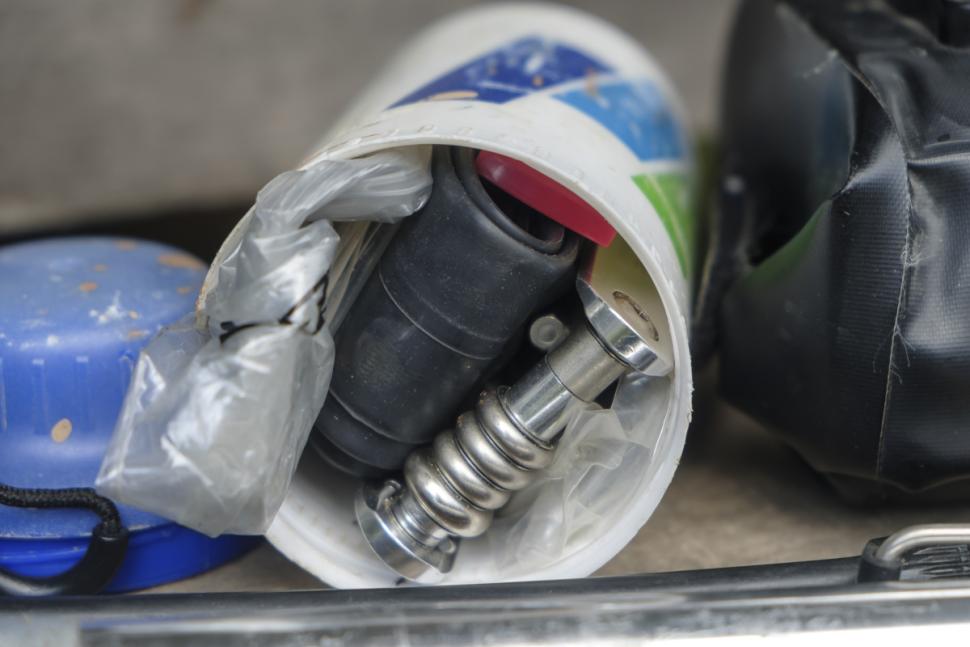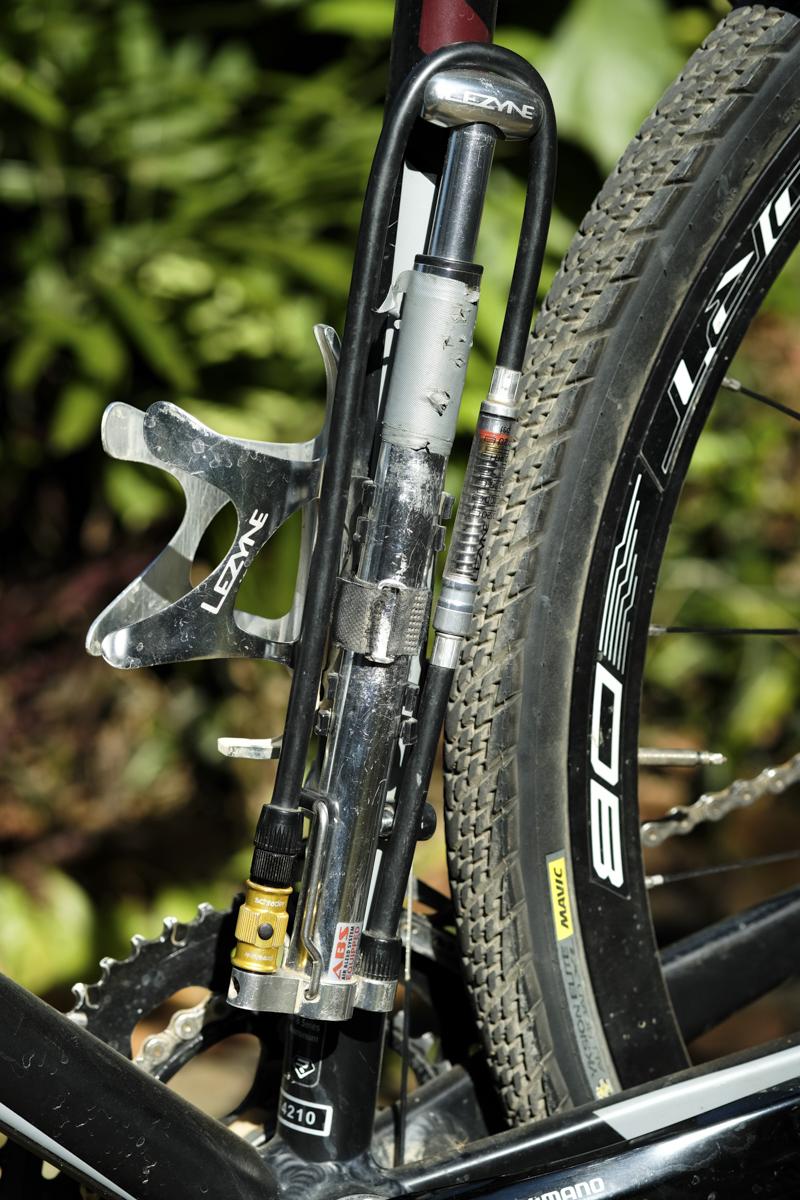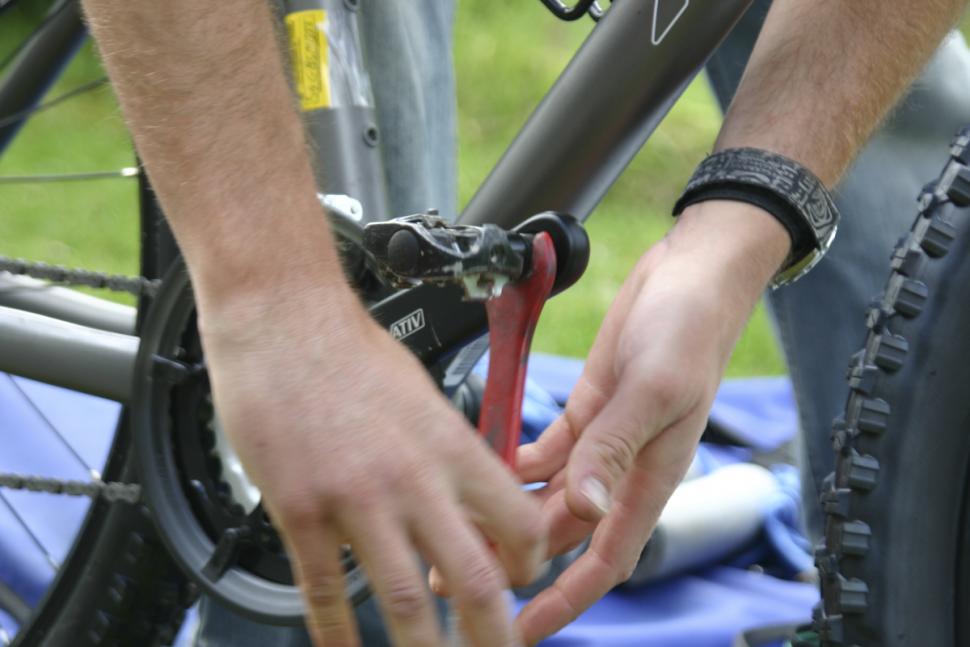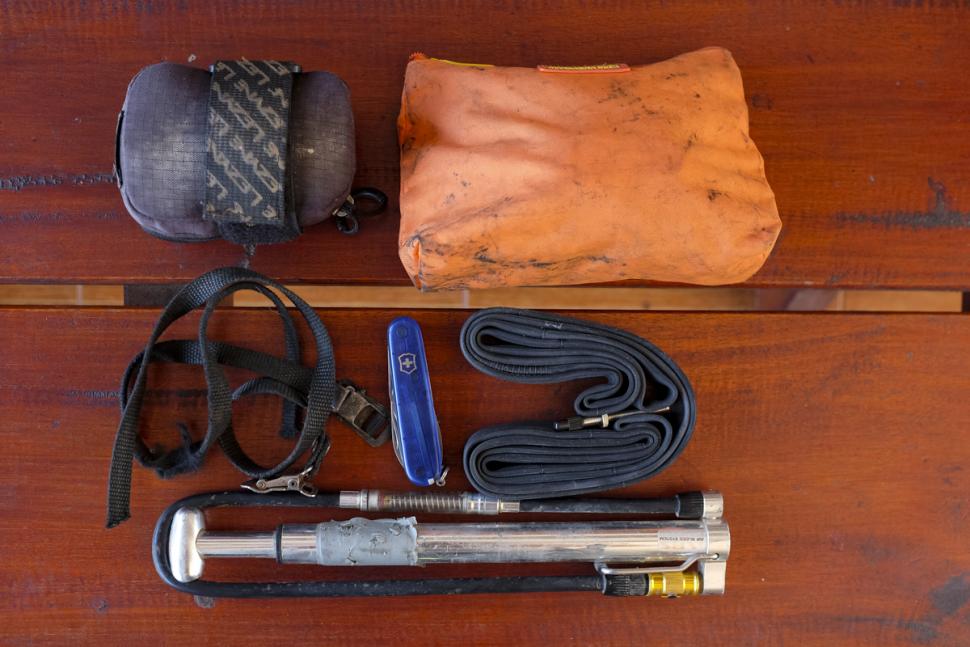- News
- Reviews
- Bikes
- Components
- Bar tape & grips
- Bottom brackets
- Brake & gear cables
- Brake & STI levers
- Brake pads & spares
- Brakes
- Cassettes & freewheels
- Chains
- Chainsets & chainrings
- Derailleurs - front
- Derailleurs - rear
- Forks
- Gear levers & shifters
- Groupsets
- Handlebars & extensions
- Headsets
- Hubs
- Inner tubes
- Pedals
- Quick releases & skewers
- Saddles
- Seatposts
- Stems
- Wheels
- Tyres
- Tubeless valves
- Accessories
- Accessories - misc
- Computer mounts
- Bags
- Bar ends
- Bike bags & cases
- Bottle cages
- Bottles
- Cameras
- Car racks
- Child seats
- Computers
- Glasses
- GPS units
- Helmets
- Lights - front
- Lights - rear
- Lights - sets
- Locks
- Mirrors
- Mudguards
- Racks
- Pumps & CO2 inflators
- Puncture kits
- Reflectives
- Smart watches
- Stands and racks
- Trailers
- Clothing
- Health, fitness and nutrition
- Tools and workshop
- Miscellaneous
- Buyers Guides
- Features
- Forum
- Recommends
- Podcast
OPINION
Tools for the travelling cyclist — here's what I carry to fix or bodge just about anything on the road
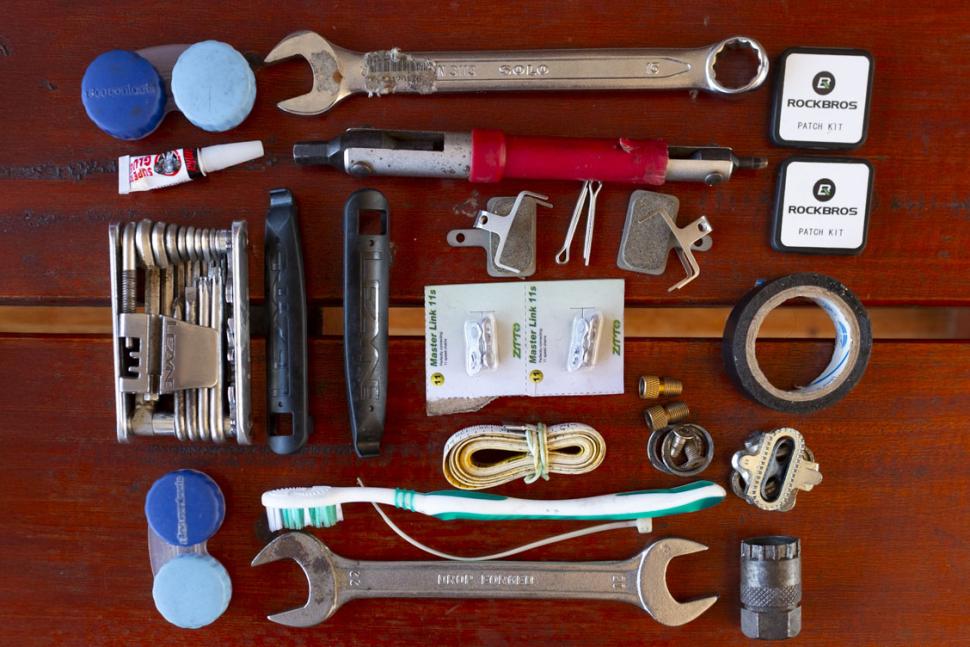 Steves tools
Steves toolsBright lights were shone into my face, and as I struggled to roll my eyes sideways, I could see two masked and cloaked figures standing over me and speaking in a foreign tongue. One of them had a small hammer and chisel in his hand, the other grabbed a chuck key and locked a drill bit in place before revving up his Black & Decker. What the proverbial was going on, what the hell was I going to endure now? All I can say now is thank you from the very soles of my feet that I was able to slur out some vague words and gestures via my wobbly hands, which was just about enough to grab their attention.
What am I muttering on about? What’s it got to do with my travelling bike toolkit? We’ll, as wide sidetracked as it may sound, it’s all part of the learning curve of terror and evolution of my tiny 'Guantanamo Tango' bag of bike bodging tricks, otherwise known as my travelling tool kit.
As if the lead up to this moment, and then the crazy aftermath that followed wasn’t traumatic enough, for those long few minutes I was, to say the least, as freaked out as you could be. This was around about 2003-2004, somewhere in Southeast Asia where I ended up on an operating table. Following a nasty collar bone break a week or so earlier, my bones weren’t setting properly and were virtually poking out of my skin at an insane angle.
The only solution was to cut me open, crack them apart again and then bolt me back together with a 5-inch-long titanium plate and five screws. Luckily, those slurs and hand movements alerted them to the fact that I needed a little extra sauce to be put out, although the fear of that moment, and the memory, lives on.
A couple of weeks earlier I’d taken my new Diamondback full suspension MTB out to tame some urban and jungle trails, only when I arrived my front disc was so bent out of shape that it was impossible to use or true. I’d travelled with Hope discs in the past – and left them on the wheels when travelling, and with no issues, but these other brakes and disks were a tad flimsy, to say the least. With it being relatively early on in the evolution of disc brakes, and without any knowledge of how to fix them, I’d left them on the wheels during transit, as the multiple hex bolts holding them on where a nightmare to take on and off.
After trying friends at two local bike shops, neither would touch these then space-age bike stopping flying saucers, and so I was left with no way to get new discs or repairs sorted; plus I hardly used my brakes anyway...
Surely, I could get through the next month with just a rear brake? Naturally the answer should have been no, and that’s why I ended up on that operating table (lesson learned). From then on, my disc wheels are almost all centre lock, meaning much easier removal, and also it meant adding a couple of new bits to the tool stash. At that time, I could be on flights every two to three days, and so putting a bike together in the tropical heat for just a couple of days’ riding meant that I kept, and still do keep things to an absolute minimum.
After a few days of training on city roads and trails with my one-braked bouncing beast, all was good. I hit one of the gnarliest MTB trails in the land, plus I was flying solo.
There was a steep drop off, which is only just about rideable at the best of times. At the bottom there’s a tree in the middle of the trail, meaning a full-on side skid and swerve was needed to avoid it – and that doesn’t work with just a back brake, hence me and the tree met with a bang.
The evolution of my toolkit
The days when I was able to fix or bodge just about anything on my bikes with an adjustable spanner, some pliers, a small punch and a rock are long gone, such has been the evolution of bikes over the past 20 years or so. This has made fixes on the fly a fair bit trickier.
These days a strip down and rebuild or fix now takes longer that it did in days gone by (from 15 minutes to 35-ish I’d say), and the potential for things to go rubber side up should you shoot your bolt or bend your one-of-a-kind rear end are now much greater too. These bits are not exactly east to replace in the middle of a jungle, and there are only so many spare parts you can reasonably carry along too.
For a long time I still travelled with older cantilever bikes with regular spoked wheels, ran inner tubes, standardised my bolts all through and used cables (and still do). It’s all stuff that’s relatively easy to fix, bodge, and even find parts for in more remote areas. Sadly, those days have slowly but surely rusted and worn away over the years.
Long ago, my kit was overall a little heftier – mostly because airline baggage arrangements were friendlier on the wallet then. If you’re heading to Majorca or similar then it’s all pretty straightforward, there’s little doubt that you can find a preparatory replacement gear hanger for a Colnago or get your Di2 sorted out; but that’s not the case on 95% of my travels. That said, as much as is possible I still try to break down and multi-purpose my bikes and tools for travel, and am always aware of what I may be able to find locally if I need to – and also what I can borrow.
Most hotels and guesthouses will have some form of “heavy tools” lying around: hammers, adjustable spanners, full-sized screwdrivers and pliers being commonplace. These are the kind of tools that you may only need once or twice on a trip. Embracing this approach can make life a lot easier on your knuckles when compared to the trickery often required to get a tiny and fiddly multi tool in place, therefore these big things no longer make the small bag cut for me.
In the past my extended toolkit often included a spare pair of tyres – usually road or touring rubber on the bike and cyclocross tyres as spares (so I could ride most things), spare shoes, and in the early days of SPDs I even travelled with spare pedals – but at the very most, these days I carry one spare tyre and a few tubes.
Back in the days of full-frame pumps I travelled with just that one inflation device, but the advent of mini pumps also led to buying a series on cheap plastic track pumps, which I’ve found all over Asia for a fiver. They do a great job in saving my arms, and are also just about bold enough to seat new tyres on a tubeless rim.
Depending on what tyres I’m running (if they may need pressure to seat them), I still carry a cheap track pump much of the time, and also a Lezyne Micro Floor Drive pump on the bike – or instead of a track pump, it’s a pint-sized packable compromise. There is also a wrap of gaffer tape around the pump which stops my hands from burning with the heat it generates, and can also come in handy in many other ways along the way. I always run inner tubes on my travels, carrying two to three spares and a couple of packs of patches too.
Although I always have a fairly high spec multi tool with me, that’s mostly kept on the bike for fixes on the go. For the heavy work I spoil myself and save my knuckles from a bloody beating by carrying some bigger tools. The long-standing saviour here is my 15mm spanner for the pedals, and that tool has saved my bacon many times over the years (and other peoples’ too). For a few years I used a cone spanner for this (and for cone adjustments), but I bent several and so went back to the heavier option.
Of late I’ve been riding Hope pedals, which like many need a hefty Allen key to affix – but I’ve since switched to a cheap 30-year-old multi tool for this. It’s also much easier on the other bolts too. That said, I’m still not a fan of having to wrench an Allen fixing pedal from the inside of the crank.
Having deleted an adjustable spanner from my bag, I now also carry a 20mm spanner and cassette removal tool for my centre lock brakes. Those discs either go hard side down in my checked bag or in my carry-on – although I have had some weird looks when they go through the X-ray machines at the airport. I guess they think I’m some kind of wizard or circus performer...
Although I rarely used tyre levers in the past, with most rims and tyres being TLR I now also carry 2-3 tyre levers along too, plus a screw-on Presta-Schrader valve adaptor, which stays on one valve so I can use any pump I come across.
Also in the bag is a small foldable tape measure, which has proven indispensable over the years. Throw in an old toothbrush, and old pair of Y-fronts (both for cleaning – and emergencies), a couple of quick links, some zip ties, a few toe straps (some of the most used elements of my kit), spare cleats and brake pads, insulation tape, superglue, contact lens pots with grease, oil, and a couple of spare bolts in, plus a Swiss Army knife to my wash bag, and I’m ready to bodge and roll most things.
As for the pièce de résistance, my Guantanamo Tango tool bag itself? That does get swapped out every now and then – it’s one of those free sock & toothbrush bags that you often get handed on long-haul flights (I also keep the free socks for dirty build ups and as rags), and I have a stash of them lying around. I purposefully try and keep it all crammed into a small pouch so that I limit my kit, and it seems to work for me.
The future? After a particularly dusty gravel trip recently, I’ll be adding a small hand spray bottle filled with degreaser along too, plus a full sized 2.5mm Allen Key for the fiddly rear hanger bolts – for which I have no spares, though do also need to source at some point.
Next time you travel, be sure to throw a 15mm spanner into your bag – even if you don’t take a bike with you, it could well come in useful as a bottle opener, spoon, or simply for self-defence purposes. You never know..
More Opinion
Latest Comments
- David9694 2 sec ago
That's a clear 2 points awarded there, but I guess as there's now a 25% tariff you'll only get 1.5
- mark1a 11 min 2 sec ago
Fawkes Cycles is only local if you live near Oldham. That's nearly 300 miles away from me. Also, any retailer that doesn't participate in an...
- David9694 13 min 13 sec ago
Openreach under fire over delays to Amesbury cabinet repairs...
- brooksby 15 min 20 sec ago
Out of curiosity, what options do you have if you get - say - halfway along there and then find that it is closed due to incompetent civil...
- Rome73 1 hour 35 min ago
'He’s more upset about not currently having a car.” obvioulsy.
- Destroyer666 8 hours 10 min ago
Anodizing the aluminium is also for corrosion resistance and therefore enhances the longevity of the rims while this is not really a case for...
- bobbinogs 9 hours 24 min ago
Wheelsmith has always been very good for me. Malcolm was always very opinionated so I got bored with him telling me I should be riding tubeless,...
- Terry Hutt 9 hours 43 min ago
I assume you can carry an e-bike battery on the tube if you leave the bike at home. ...
- chrisonabike 10 hours 45 min ago
I love it - it's a roundabout with a sculpture of a roundabout on its desk!
- Rendel Harris 10 hours 53 min ago
To rhyme with design. I wondered this myself so looked it up a while ago, according to the founder Micki Kozuschek he and his team had a few...
